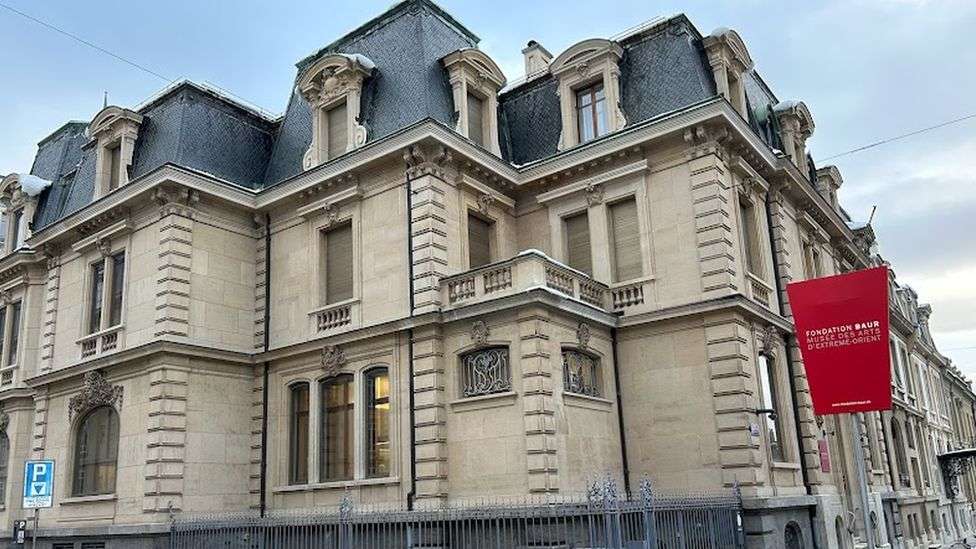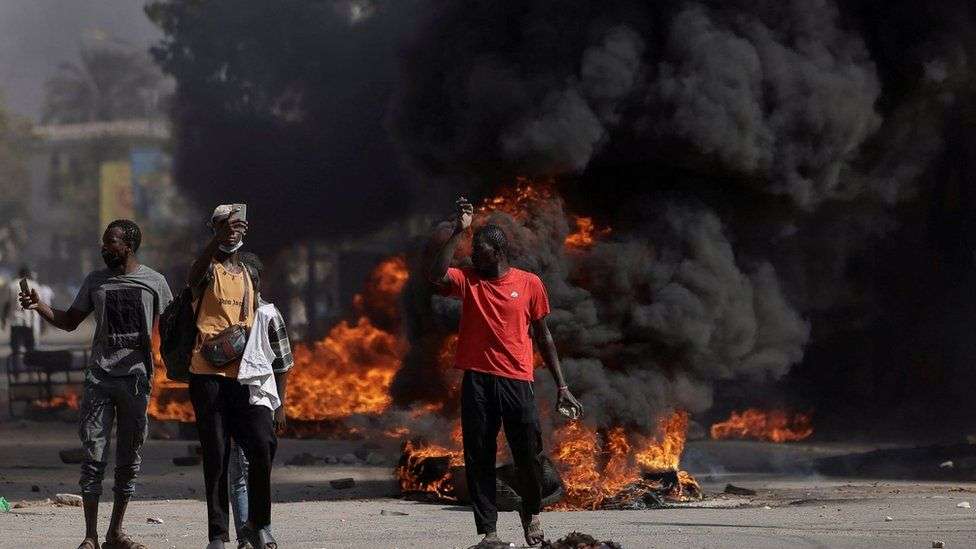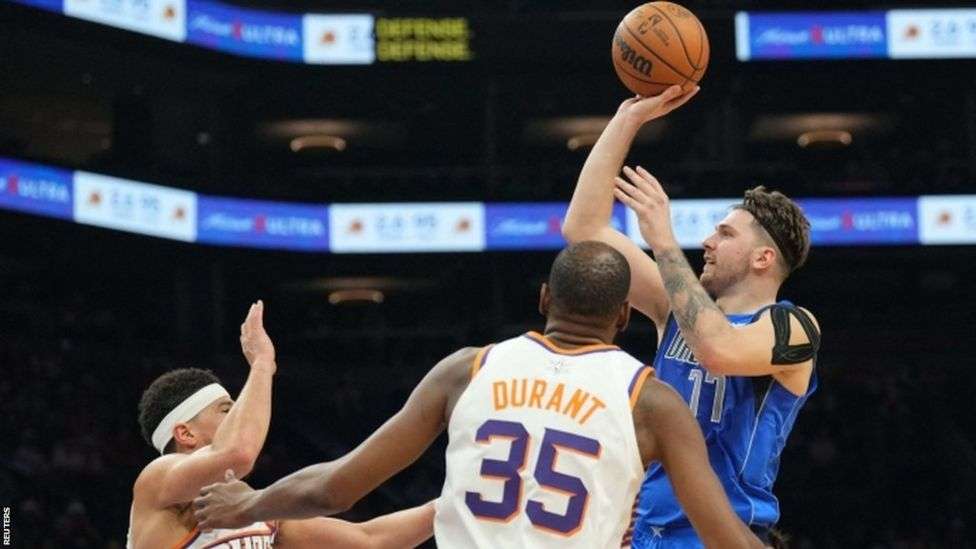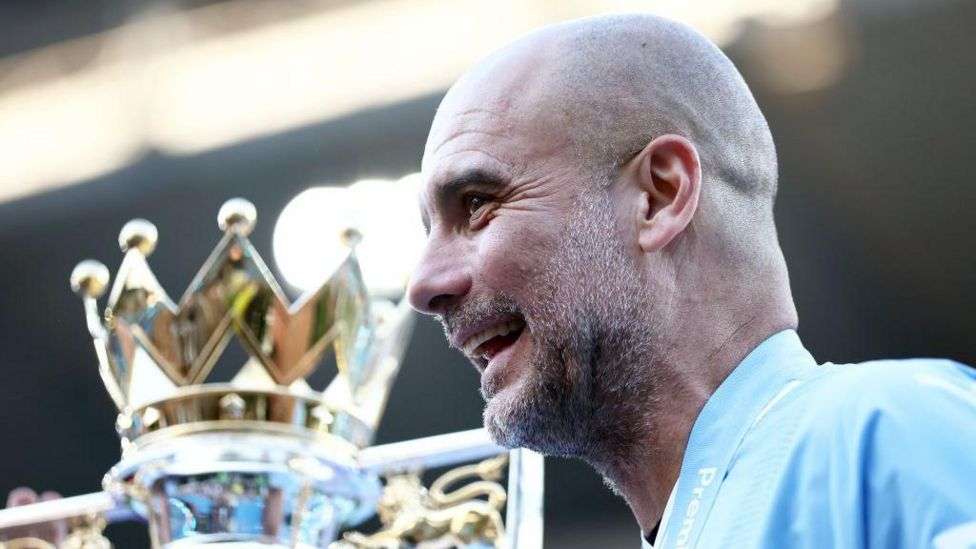On the night of 1 June 2019, a grey Renault Koleos pulled up outside Geneva's Museum of Far Eastern Art.
Three men wearing ski masks, dark clothing and gloves got out and walked up the steps to the solid, wooden front door.
Dotted across four floors of an elegant 19th-Century townhouse, the museum - also known as the Baur Foundation - hosts an extensive, world-renowned collection of Chinese and Japanese artefacts.
The silence was shattered by the sound of a power tool as the gang took a saw and crowbar to the front door. Once they had crawled through their man-made hole they sprinted to display cases containing items from the imperial Ming Dynasty era, dating from the 14th Century.
After smashing the cases and cabinets they grabbed two bowls and a vase, scurried back to the entrance, crawled through the hole in the door, then jumped into the Renault and made their getaway into the night.
A judge overseeing a trial in Geneva this week said the heist "took less than a minute".
The gang left nothing behind that could suggest their identities, but, in their hurry to flee, one of the men scraped his stomach against the sides of the hole in the door - leaving traces of DNA behind.
That sample later returned a name: Stewart Ahearne, a father-of-five from Greenwich in south-east London who worked as a tradesman.
Records showed he took a British Airways flight from London City Airport to Geneva the day before the burglary. He had also hired a Renault SUV matching the description of the vehicle outside the museum.
Geneva detectives enlisted the help of London's Metropolitan Police and a team led by Det Ch Insp Matthew Webb then travelled to Europol in The Hague.
They were shown CCTV from outside the museum the day before the raid and it appeared to show a man carrying out reconnaissance by filming the area.
That was when they recognised the suspect as Stewart Ahearne's younger brother, they explained.
"We said 'that's Louis Ahearne!'," said Det Ch Insp Webb. "We knew him and it was a useful moment for them. They had the second person."
The Swiss detective team then revealed what they had learned.
A check on the car hire company at Geneva Airport showed the Renault had clocked a substantial number of miles over a short period of time.
On a hunch, Swiss police officer Gilles Maeder measured the distance from Geneva Airport to the museum, to a French ferry port and then on to the brothers' London addresses - and back.
"It was there or thereabouts a perfect match," Det Ch Insp Webb said.
Weeks after the raid the Ahearnes also travelled to Hong Kong, the trial in Geneva heard.
They took one of the two stolen bowls in their luggage to the China Guardian auction house. After leaving his passport details with staff, Louis Ahearne sold the bowl for HK$236,000 (£23,800), the court heard.
It took just over a year for the next big steps in the investigation. At the end of July 2020, China Guardian received an email from a man named Mr Steel who claimed he had recently acquired a pomegranate bottle vase and requested a valuation.
Interpol and the museum confirmed from photos it was the stolen vase.
A few days later, with no response to his requested valuation, Mr Steel contacted the Hatton Garden Art Loss Register stating he had a vase and told them it had been "stolen from Switzerland a year ago and is worth £3m".
"I am trying to help get this returned to wherever it was stolen from," Mr Steel wrote. "Please, any help would be great."
China Guardian then tipped off the Met Police and undercover officers struck up a relationship with Mr Steel as part of a covert operation.
His real name was David Lamming, they discovered, and his email address was connected to the Ahearnes.
One officer, using the alias Paul, liaised with the gang and then agreed to meet Lamming to discuss a price for selling the stolen vase.
On 30 September, Lamming, "Paul" and a second undercover officer, posing as a buyer called Richard, met for lunch at the exclusive Scott's restaurant in London's glitzy Mayfair.
Over lunch, Lamming told Richard the vase had been "taken" by three people the previous year. He referred to one of them as "Stu" and said he was in contact with someone called "Dave" with a view to finding a buyer for it.
They agreed to meet again and on 7 October, Lamming and Stewart Ahearne met their undercover buyer Richard at Delfino's - another Mayfair location.
After some haggling, the undercover officer agreed to pay £450,000 for the vase - a considerable drop from the original £1m demanded by the thieves.
A third and final meeting to exchange the cash and stolen vase was set for 15 October at the five-star Marriott Hotel in nearby Grosvenor Square.
On the day of the meeting, Richard walked into the Marriott meet-up in room 347, which was being closely watched by police.
He had brought along a third undercover officer, posing as Miranda, an expert in Far Eastern art to authenticate the vase.
"They were late turning up and we hadn't heard anything," Det Ch Insp Webb recalled. "You think: 'Are they going to turn up? Where are they? When do I call this a day?'"
Then, an associate named Leslie Mbaki Nkhwa was spotted outside by the surveillance team.
He dragged a large black suitcase through the Marriott's lobby where he met Stewart Ahearne. The pair went up to the room.
Out of the suitcase came a yellow JD Sports bag and inside it was the stolen vase.
"The vase was there - and that was my cue to tell my team to enter the room," said Det Ch Insp Webb.
As soon as the vase was safely in the hands of "Miranda", police stormed in and arrested the two men.
Waiting outside the Marriott were Lamming and a driver called Kaine Wright, once a promising footballer on the books of West Ham and Brentford.
When Nkhwa and Stuart Ahearne failed to return, the two drove off, but were arrested later on and Ahearne's passport was found at Nkhwa's home in south-east London.
A leaflet from the Geneva museum was also retrieved. A circle had been drawn around the pictures of the stolen Ming Dynasty items.
Wright and Nkhwa were each convicted in London of conspiracy to convert criminal property; they were sentenced to three years and 30 months' imprisonment respectively. Lamming changed his plea to guilty just before the trial began. He was eventually jailed for three years and two months.
The Ahearne brothers were extradited to Switzerland in 2022 and confessed to their involvement during a trial in Geneva on 15 January.
Louis Ahearne said he became involved because he had to "clear a debt" and Stewart Ahearne said he wanted to protect his younger brother.
But prosecutor Marco Rossier disputed the brothers' version of events saying the pair, and a third man named in court as Wright's biological father Daniel Kelly, were all "equally involved" in the burglary.
He said the third person was not in the court and was currently the subject of extradition proceedings to Japan.
At one point Stewart Ahearne broke down in court, and his mother, Suzanne Ahearne, revealed his brother Louis had been writing to his nine-year-old son from jail trying to "give the guidance he never got" from his father.
Both men apologised for their actions, and they were jailed for three-and-a-half years and banned from entering Switzerland for five years once they leave.
Judge Patrick Monney said the damage they had caused was "considerable and may be irreparable", because one of the bowls known as a chicken cup has not been recovered.
The vase recovered in central London and the bowl sold at the Hong Kong auction house have been returned to Geneva's Museum of Far Eastern Art.
The museum has not commented but Det Ch Insp Webb said the team that recovered the two artefacts had been thanked by the curator.
It still raised a smile remembering how Nkhwa had been carrying around London a priceless vase in a yellow JD Sports bag, he said.
But walking up to the display cabinet seeing the vase safely returned was a moment he would never forget: "The last time I remember seeing it I was securing it; and here it was, back in the museum."








